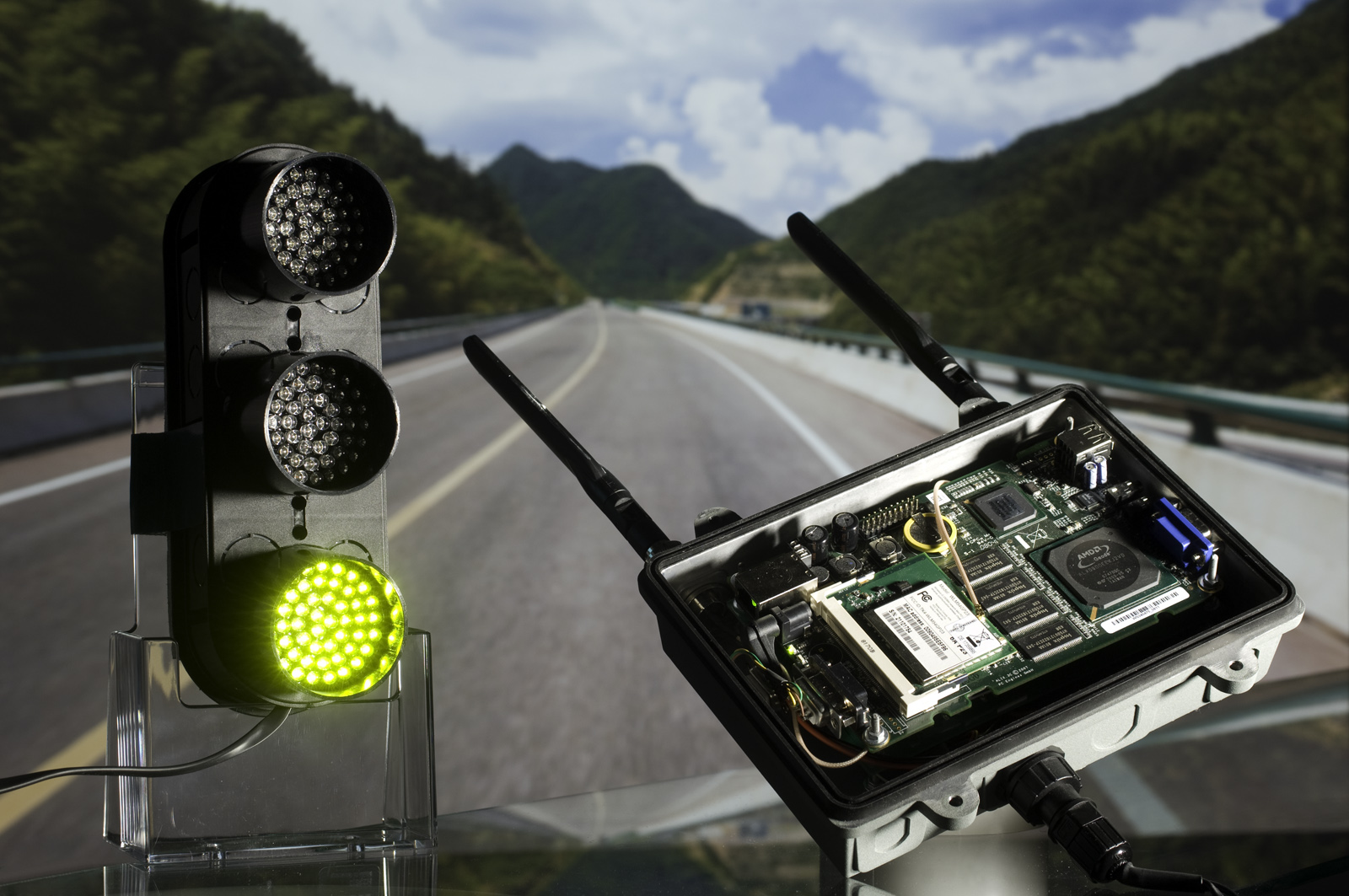When cars talk to one another
Networking vehicles with one another and with the infrastructure gives the driver information on the situation beyond his or her field of vision and warns the driver about accidents or traffic jams. Researchers from Fraunhofer will be unveiling the latest applications for traffic safety and efficiency from March 1-3 at the embedded world Exhibition & Conference (hall 11, stand 203) in Nuremberg, Germany.
Although modern cars meet high safety standards, almost 5,000 people die every year in traffic accidents in Germany, and more than 400,000 are injured. To reduce these figures even more, researchers at the Fraunhofer Institute for Communication Systems ESK in Munich, Germany, are working on innovative ideas for car-to-x communication (abbreviated as C2X): by networking vehicles with one another and the infrastructure, the software systems can keep the driver constantly apprised of current traffic and road conditions to support the driver in the decision-making process.
This is why researchers at the Fraunhofer ESK developed a C2X system that makes structured communication possible between an electronic unit in the vehicle and the outside world. Josef Jiru, the project manager, had the following to say: “This system is premised upon on a WLAN specifically developed for vehicles in combination with GPS. The vehicle’s position and sensor data on speed, acceleration or sliding can be reported to wireless communication nodes on the side of the road – called roadside units (or RSUs).” In exchange, the RSUs give vehicles the latest information on road conditions ahead, for instance if there are any accidents or traffic jams, or just the best speed for timing the green lights.
These are three types of information:
• First of all, there are periodic standardized messages that every car transmits to other cars and the RSUs up to ten times a second. They include the position, direction of motion and speed among other things. This enables the RSUs and the on-board units to get an idea of the situation at particularly dangerous points such as freeway access ramps and warn drivers of potential hazards in due time.
• Secondly, there is event-based information such as notifications of accidents involving passenger cars or that the RSU recognizes because several vehicles are simultaneously braking fast. This also captures traffic jams because a lot of cars are standing still, or slick roads when the ESP (electronic stability program) activates in other vehicles. The experts research the methods for “context-sensitive aggregation” of information so that the C2X system does not break down when a lot of vehicles are affected by an event such as this. That means that various messages of the same type are combined and filtered according to relevance. This makes it possible, for example, to block reports on events farther away to keep networks from getting overloaded.
• Thirdly, there is application information. This is information on traffic-light sequences that vehicles can exchange with one another, along with traffic information generally. RSUs can also gather data from other sources such as radio and the traffic center.
Other applications and the software for them are loaded wherever needed to launch the minimum configuration for the C2X system in order to go easy on the resources of the units. This means that drivers and RSUs can request and even offer specific services, as will be demonstrated at the embedded world Exhibition & Conference. Of course, communication protocols will have to be standardized to enable all manufacturers to use these systems, and the Fraunhofer Institute for Communication Systems ESK is actively participating in this process as a member in the CAR 2 CAR Communication Consortium.
